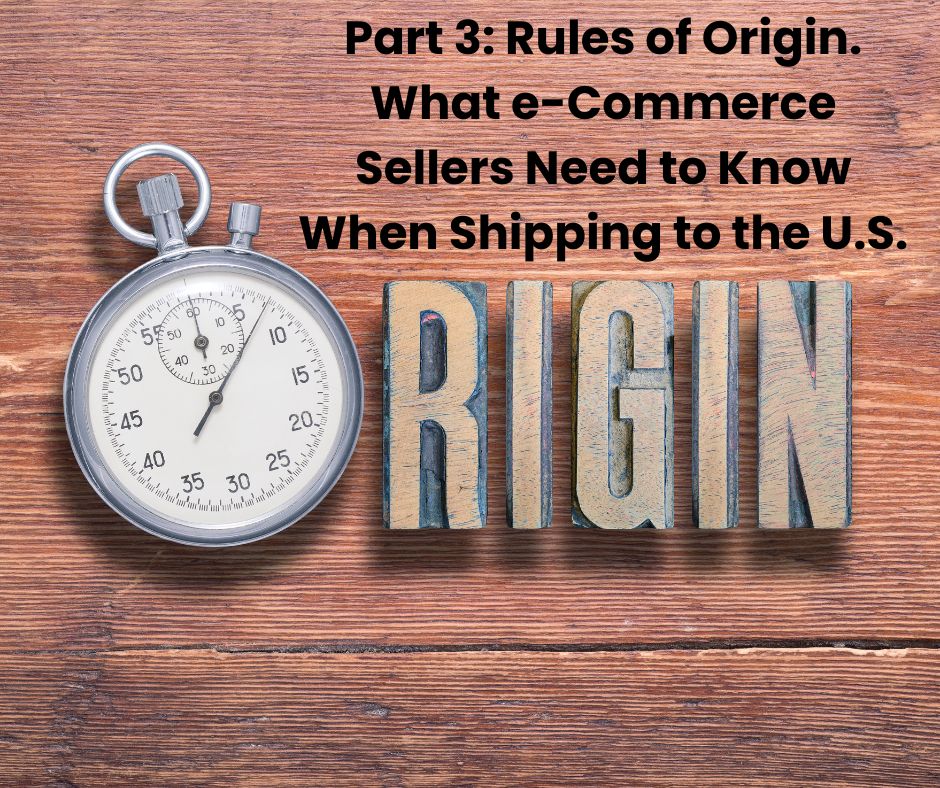Rules of Origin: What e-Commerce Sellers Need to Know When Shipping to the U.S.

Part 3 of a 4-Part Deep Dive for Global Online Sellers.
If you're an e-commerce seller working with manufacturers in China or Vietnam, and you're selling into the United States, it's essential to understand Rules of Origin (RoO). These rules determine the country of origin of your goods — and that matters a lot when it comes to tariffs and compliance.
Let’s break it down — especially if you're sourcing materials or assembling products in multiple countries.
Why Rules of Origin Matter
Even if you’re operating from Australia and shipping globally, U.S. tariffs are based on where the goods are made or substantially transformed, not where they’re sold or stored.
If you manufacture or assemble your goods in China, Vietnam, or Australia, your product’s country of origin for U.S. customs purposes depends on where the most substantial transformation takes place.
What Makes a Product ‘Originating’?
A product is considered ‘originating’ in a country if it meets one of the following:
1. Wholly Obtained or Produced in One Country Example: Cotton grown and processed entirely in Vietnam.
2. Made Entirely from Originating Materials If a product is made in Vietnam or Australia using only materials that already qualify as originating, it may retain that origin.
3. Manufactured Using Foreign Inputs But Substantially Transformed Here’s where things get more nuanced — especially for sellers.
If You Import Materials and Manufacture in Australia (or another country)
This example is for Australia but it is applicable to any country.
Let’s say you import fabric from Vietnam or components from China, then cut, sew, and assemble the final fashion item in Australia.
In this case, your product may qualify as Australian-origin — if the processing in Australia meets the applicable Product-Specific Rule (PSR).
This usually means that a substantial transformation must occur in Australia. In other words, the production must result in:
· A change in tariff classification (CTC) — where the final product has a different HS code than the inputs, and
· The transformation must be meaningful (not just repackaging, relabelling, or simple assembly).
Example: You import fabric (HS code 5208) from Vietnam and use it to manufacture dresses (HS code 6204) in Australia. Because the product has a different classification and was substantially transformed, it may be considered Australian origin for U.S. tariff purposes.
Why This Matters for the U.S. Market
The U.S. imposes additional tariffs on certain goods made in China, so confirming that your goods are originating in Australia (not China or Vietnam) can help you:
· Avoid additional duties
· Access de minimis benefits (until May)
· Ensure smoother customs clearance
But remember U.S. Customs and Border Protection (CBP) may review production records to verify whether a true transformation took place in Australia.
Transhipping Through Australia Is Not Enough
Bringing goods into Australia and shipping them to the U.S. without changing them does not change the country of origin.
If you’re only warehousing, repackaging, or relabelling Chinese- or Vietnamese-made goods in Australia, the origin remains China or Vietnam, and U.S. tariffs still apply.
Tips for Online Sellers
· Understand where your goods are truly made or transformed.
· Work closely with your suppliers and manufacturers to document origin details.
· Check the Product-Specific Rule (PSR) based on your product’s HS code.
· Don’t assume that shipping from Australia changes the origin — it’s about how the product is made.
Final Word
Understanding Rules of Origin isn’t just for big manufacturers — it’s essential for any Aussie e-commerce business that sources globally and ships to the U.S.
By knowing how origin is determined, you can better manage tariffs, stay compliant, and protect your margins.
And remember:
These rules apply to any online seller shipping into the U.S. — no matter where your business is based.
Whether you’re in Australia, Europe, Asia, or elsewhere — if you're sourcing globally and selling to U.S. customers, understanding how your goods are classified and where they’re truly made is critical to avoiding surprise costs, delays, or compliance issues. Join the Global Passports e-Commerce program. Find out more by emailing info@gtpalliance.com.